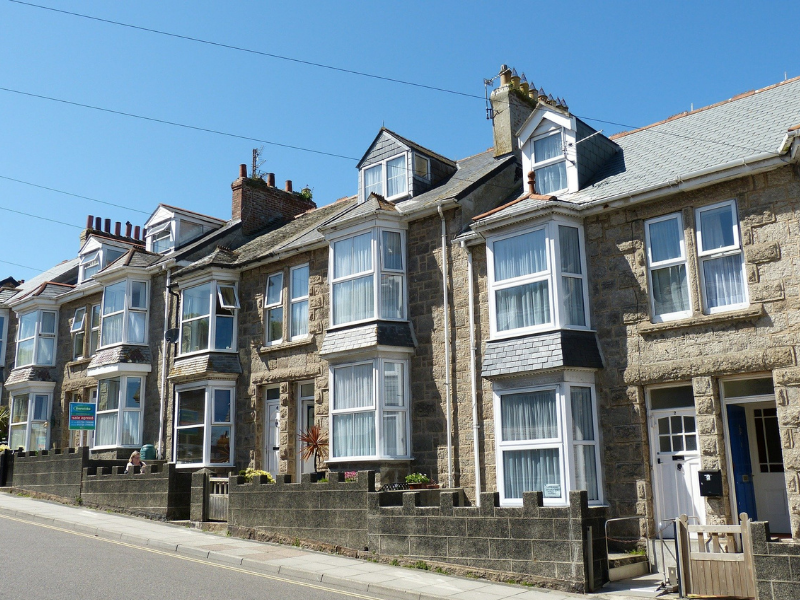 Housing
Housing 
Our new Housing Policy Officer Hugh Kocan argues the freeze in local housing allowance will make housing more unaffordable for those on the lowest incomes
In November of last year, Chancellor Rishi Sunak announced that the government would be freezing the rates of the Local Housing Allowance (LHA), a move that has been widely condemned by numerous homelessness and poverty organisations, and landlord associations alike.
The LHA is the housing element of Universal Credit. It is designed to provide people with enough money to cover rents in the bottom 30% of the market in a specified area, with the rate also dependent on the number of bedrooms. With rental prices always increasing, the bottom 30% are consistently becoming more expensive. The Chancellor’s decision to freeze the LHA, results in an affordability gap between the price of rent, and the amount of money received by claimants.
This is not the first time that the LHA has been frozen. In 2016, after several years of rising in line with the consumer price index, it was frozen for four years. The consequences of this freeze were dire. The Chartered Institute of Housing reported that by the end of the freeze LHA rates across the UK effectively sat at the 13th percentile of market rent and in six local authorities 100% of private rented dwellings were above the LHA. By freezing the LHA, the vast majority of homes across the UK became unaffordable.
The group most impacted by a freeze in LHA were those under 35, who are only able to claim LHA for shared accommodation, which is in short supply. Data shows that the gap between the LHA and the cost of rent for shared accommodation is greater than the gap for other types of accommodation.
In Wales, the affordability gap for shared accommodation in 2020 amounted to per week was £7.05, amounting to a shortfall of £366 every year. For those in Flintshire, where the gap was greatest, the amount was £26.25 a week, or £1365 in a year.
The knock on effect is that the majority of homeless people in Wales are young and single. The shortfall between the LHA and the real cost of renting results in many people falling into rent arrears. According to StatsWales, during the previous LHA freeze 49% of all homeless cases that were prevented involved some form of financial relief, indicating the extent of the financial pressure caused by LHA.
Furthermore, the affordability issue creates a cycle of homelessness. Demand across Wales is high, and landlords have the luxury of being selective with their tenants. Many landlords only manage a single property and are therefore risk adverse when letting it out. Councils have reported that many landlords are avoiding people on LHA or with a history of arrears due to the perceived risk.
Councils are attempting to offer incentives to landlords to take on LHA tenants. Across Wales, 22% of homeless people who are rehoused are rehoused into the private rental sector with an incentive scheme provided by the local authority. This includes the council paying for deposits, paying rent in advance, or offering landlord insurance.
Despite this, there is still a lack of landlords willing to rent, and many struggle to find permanent accommodation to alleviate their homelessness. Even if they are able to find new accommodation, they will often run into the same issues with affordability.
The lack of willing landlords results in many renting in an informal market and people going into properties without a written contract or tenancy agreement out of desperation. This removes many of the safeguards and legal protections that come with the formal market, and puts people at risk of being exploited.
All of this will be worsened by a second freeze to the LHA. A study from Policy in Practice from 2020 stated that for every 10% increase in the percentage of households experiencing a gap between their LHA rate and rent, the rate of households in temporary accommodation will rise by 1%. We are already seeing the impact of the current freeze, as the average renter in shared accommodation is now experiencing an affordability gap of £2.20 per week. For those in Merthyr Tydfil, Rhondda Cynon Taf, and Blaenau Gwent, the gap has increased to £6 per week.
There is recognition from the Welsh Government of the issue that LHA is causing. In Welsh Labour’s 2021 manifesto, they write:
“we will develop a national scheme restricting rent to local housing allowance levels for families and young people who are priced out of the private rental market and those who are homeless or who are at risk of homelessness.”
However, no further information has been made publicly available as to how this national scheme will work.
This issue is of particular urgency as the memorandum on evictions comes to an end in June. With the large amount of financial difficulty faced by many during the covid pandemic, it is quite likely that we will see an increase in those threatened by homelessness. Affordability is a massive underlying cause of homelessness, and the current freeze is almost certain to put hundreds more at risk of losing their home.
This is a huge cause for concern as Wales starts to recover from the Coronavirus pandemic. This is why the Bevan Foundation have started work on a project to better understand the impact of LHA in Wales. We are aiming to develop solutions to the issues we identify, and we will campaign for reform of the system. You can read more about the project here.
Hugh Kocan is a Housing Policy Officer at the Bevan Foundation


